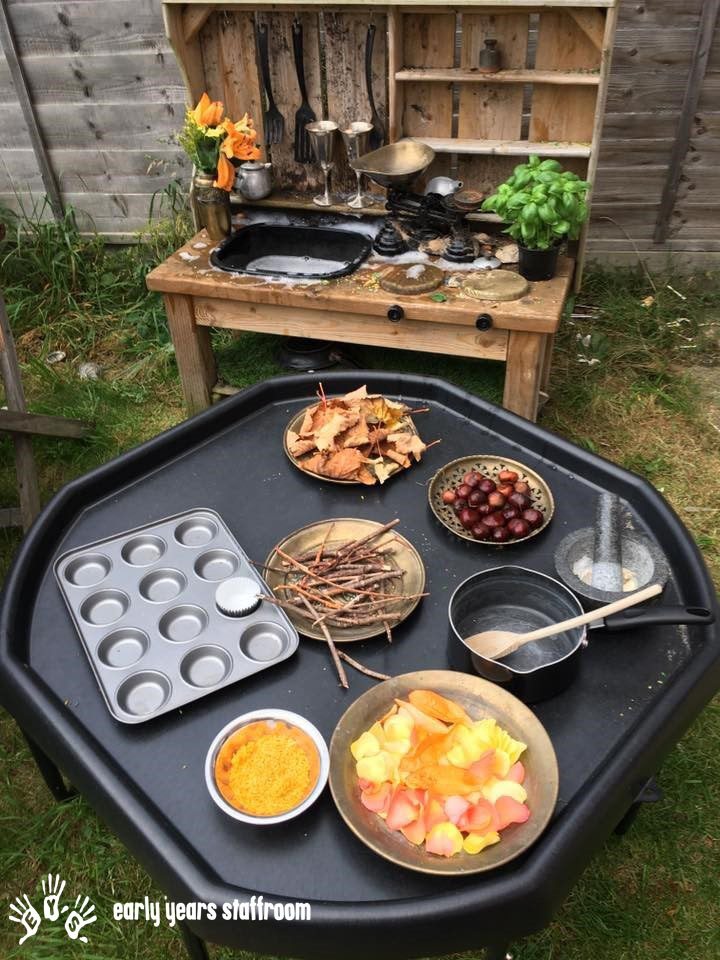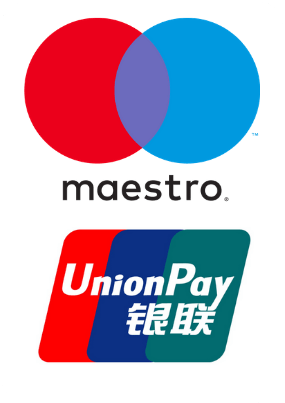You have seen children playing for hours in a home corner. A mud kitchen brings this fantastic play outside, to not only get the benefits of being outside but to engage in the messy and natural resources that are there.
By observing children in a well-equipped mud kitchen you will have the opportunity to see them displaying all of the characteristics of effective learning. You will see children displaying curiosity, exploration and experimentation in an open-ended way. Children will independently learn mathematical opportunities for measuring, filling and emptying and exploring capacity. Learning numbers and instructions by following recipes. They will be talking to each other and solving problems. As an educator, you can facilitate and extend all areas of learning in the mud kitchen. We have Autumn, Summer and Winter and even Easter recipes to use.
What can you add to the mud kitchen?
- Pumpkins, vegetable, fruits, potatoes, rice, pasta, flour
- Red coloured water in a ketchup bottle
- Flowers
- Fresh Herbs
- Sugar shaker
- Utensils, pots, pans, wooden spoons, sieves, graters, pestle and mortar, chopping boards
- Old fashioned balance scales
- Water
- Scissors
- Cups, jugs, plates
- Real cutlery
- Conkers, stones, twigs, leaves, acorns, pine cones.
- And of course Mud! (sterilised topsoil)
- Chalkboards
- Recipe Cards (we have created some lovely ones here for Wild Tea, Mud Pies and Fairy Cakes)
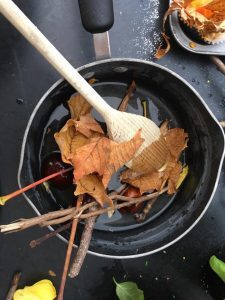
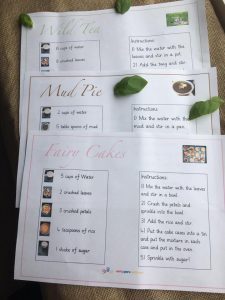
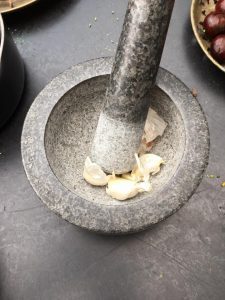
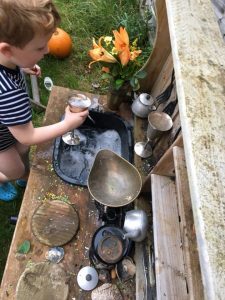
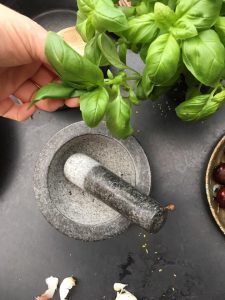
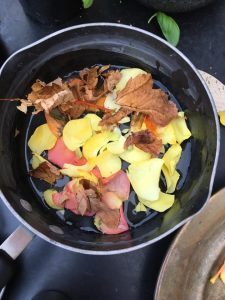
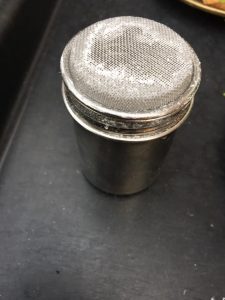

The most important thing to remember when it comes to your mud kitchen is to keep it fresh. Keep adding to it each day and especially don’t let children not have any mud in the mud kitchen!

